Identifying Trends
With countless on-chain activities happening, no event can be exactly replicated. However, we can still gain insight into the kind of activity that occurs.
Runes: Spiked Mint vs. Dragged Mint
A spiked mint is one that caused feerate to spike insanely for a short period of time, while a dragged mint is one that caused feerate to be relatively elevated for a longer period of time.
Let’s takePINK•IS•THE•NEW•ORANGE ($PINK) and CYPHER•GENESIS ($CYPHER) as examples.
| $PINK | $CYPHER | |
|---|---|---|
| Supply | 21B | 1B |
| Min. Token/Mint | 1,000,000 | 2,000 |
| No. of Mints | 21,000 | 500,000 |
| No. of Blocks Affected | 2 blocks | 117 blocks |
| Highest Median Feerate | 110 sats/vB | 78 sats/vB |
| Total Fees Spent | 0.941 BTC ($0.07m) | 33.068 BTC ($2.28m) |
| Timestamp | 2024-10-21 12:20:48 | 2024-10-24 21:25:50 |
Despite $PINK’s larger supply of 21B, due to the difference in Min. Token/Mint, $PINK’s No. of Mints are considerably lower than $CYPHER’s.
As a result, $CYPHER had a longer impact on feerate movement compared to $PINK - 117 blocks vs. 2 blocks respectively.
$PINK
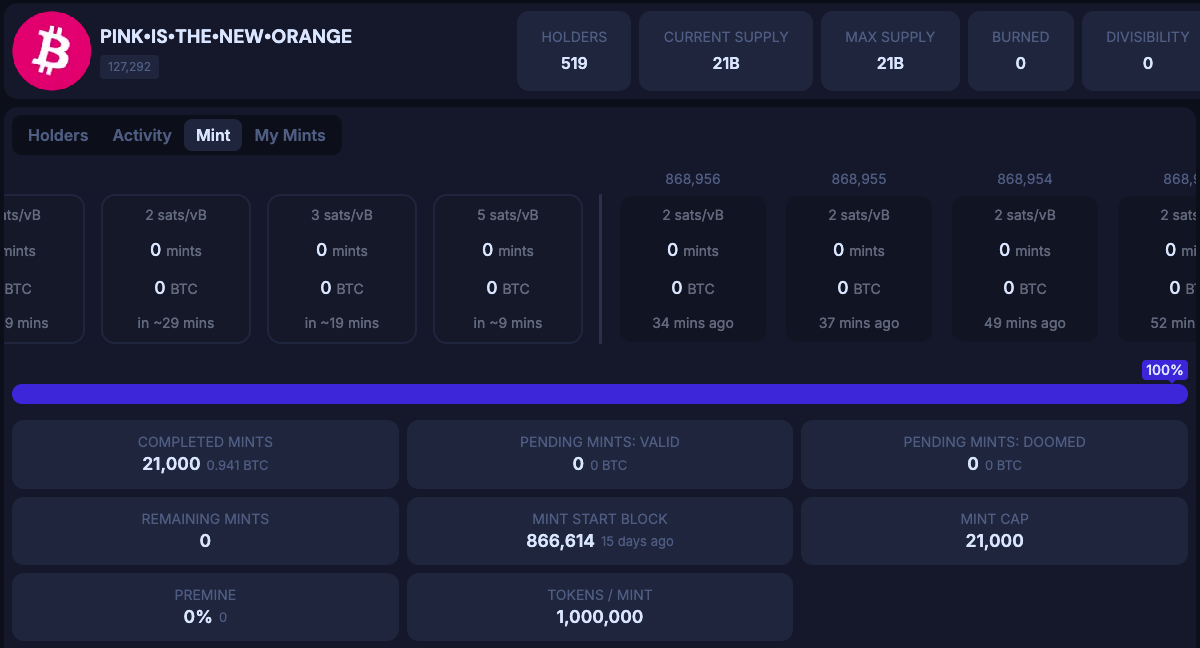
Ord.io - PINK•IS•THE•NEW•ORANGE
$CYPHER
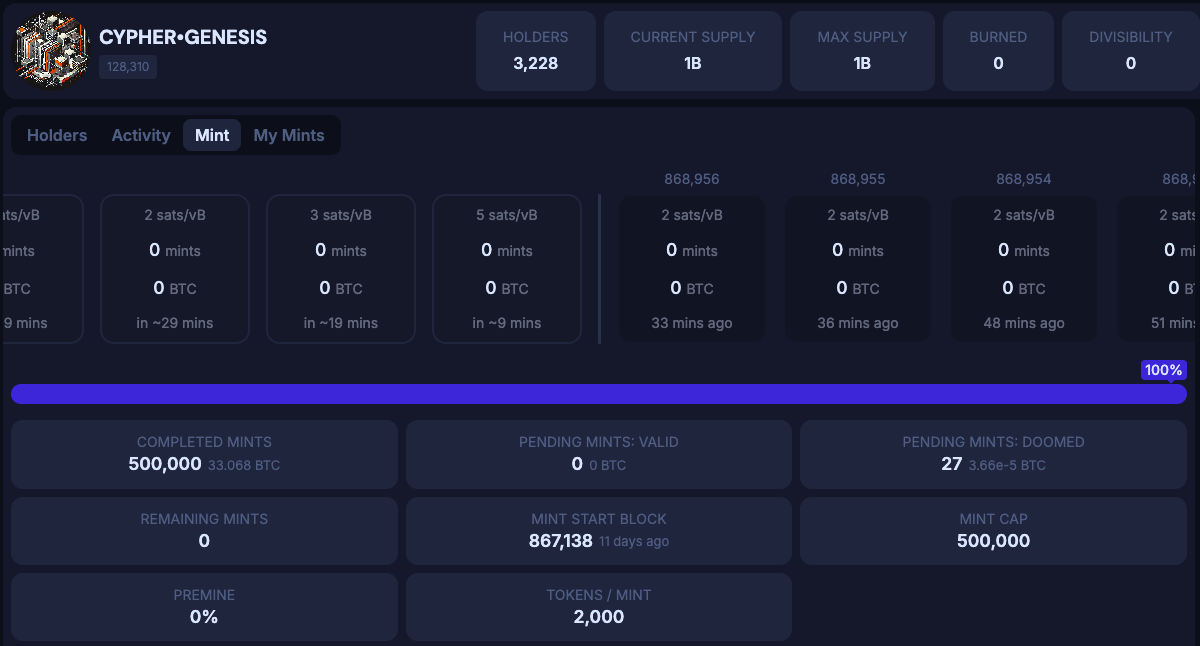
Ord.io - CYPHER•GENESIS
$PINK caused BTC median feerate to spike to 110 sats/vB in a single block, thereby causing Avg. BTC Fee to increase from 6.917 sats/vB to 8.660 sats/vB — a 25.2% increase.
On the other hand, $CYPHER caused BTC median feerate to elevate slowly to 78 sats/vB, thereby causing Avg. BTC Fee to increase from 13.972 sats/vB to 28.729 sats/vB — a 105.6% increase.
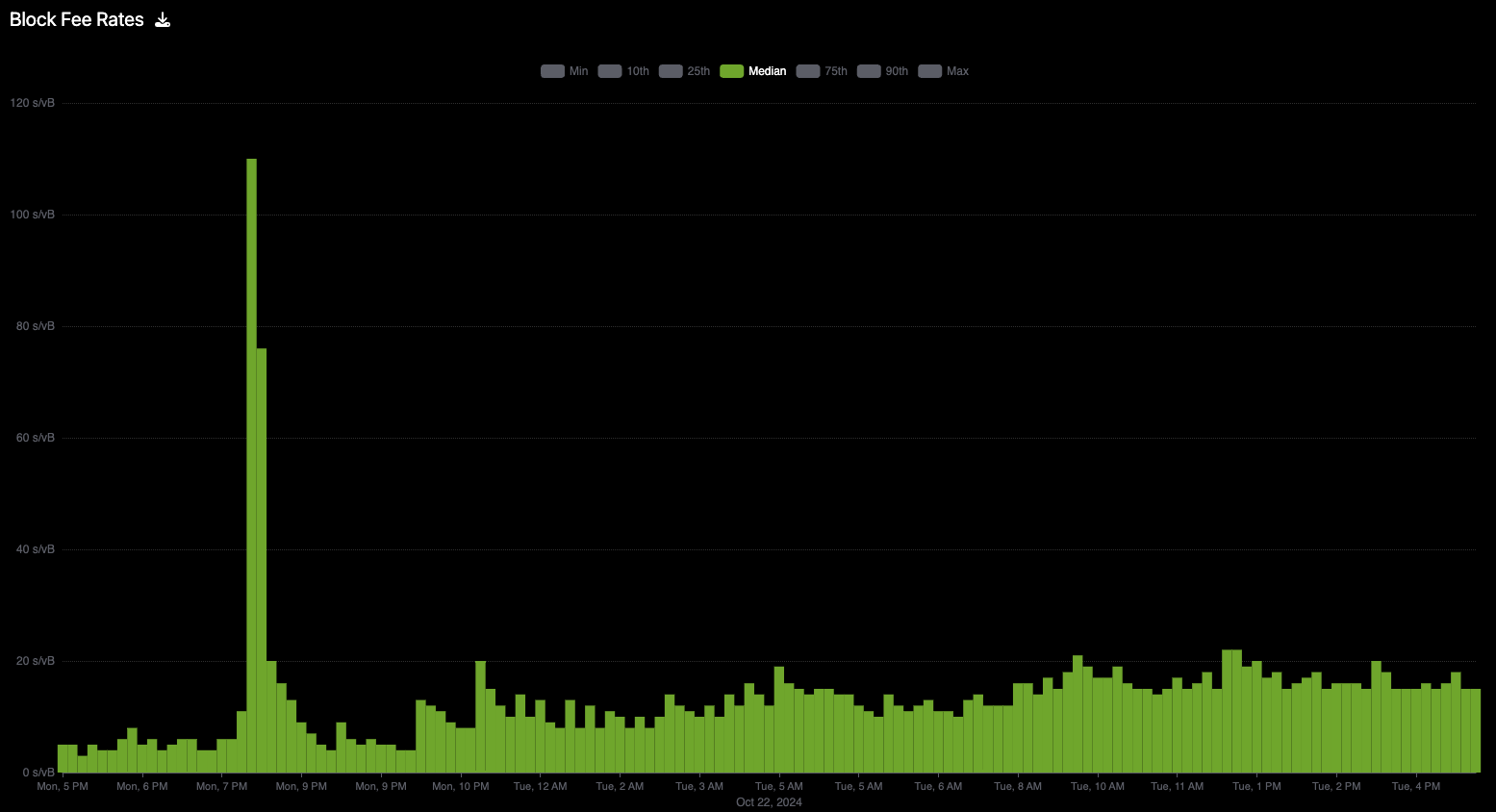
Mempool.space - PINK•IS•THE•NEW•ORANGE
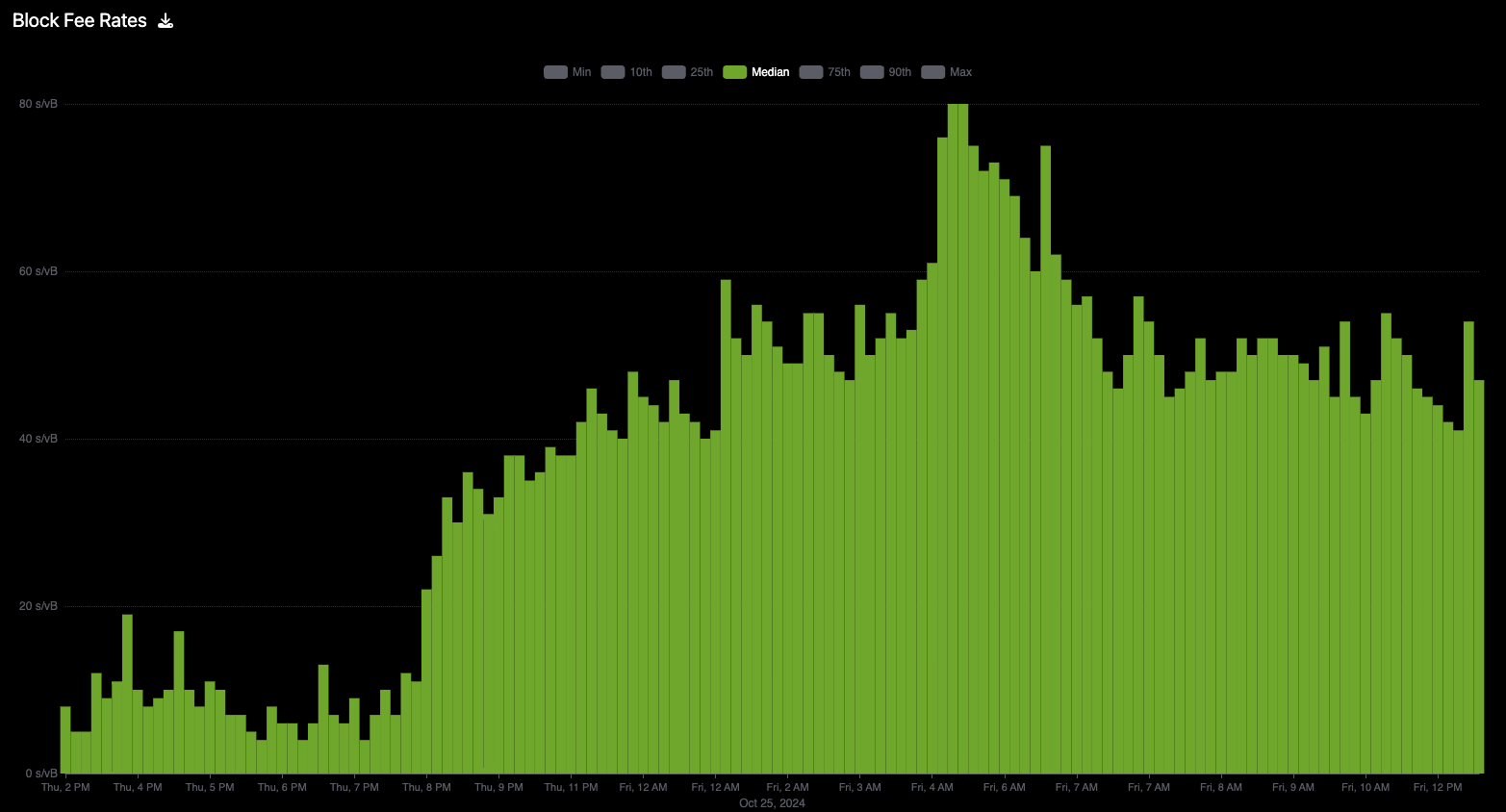
Mempool.space - CYPHER•GENESIS
Did you notice that despite $PINK’s higher peak median feerate, $CYPHER had a larger impact on Avg. BTC Fee?
That’s because Alkimiya’s BTC Fee Index tracks the median of each block, and the pools track the average of the medians of each block.
In other words, a longer period of elevated feerates will increase the Avg. BTC Fee on Alkimiya compared to a short, sharp spike.
Take a look at the comparison of $PINK’s and $CYPHER’s effects on feerate movement in a single image below.

Mempool.space - $PINK vs. $CYPHER
The longer a mint event persists, the slower the feerate's decay once it concludes. This is because most wallets, payment processors, and block explorers use Bitcoin Core’s estimatesmartfee RPC (with slight modifications) to calculate the optimal feerate. Based on the user’s target number of blocks within which they want their transaction to be confirmed, the algorithm examines the historical confirmation times for transactions in each fee rate bucket to look for the lowest fee rate bucket whose transactions have historically been confirmed within the target time.
In some implementations, statistical methods are applied to the historical data to predict confirmation times more accurately. This can include analyzing the distribution of confirmation times within each fee rate bucket and applying probability models to estimate future conditions. If there are more recent blocks with elevated feerate, the more likely estimatesmartfee will return higher feerates recommendation for inclusions.
One-Time Event vs. Multiple Events
A one-time event can be identified as a singular on-chain activity that occurred once by a single creator. The history of Bitcoin has no shortage of one-time events that are difficult to generalize or foresee ahead of time.
In June 2024, a bug in OKX’s UTXO consolidation script led to fees skyrocketing from 60 sat/vB to over 900 sat/vB in a single day. Centralized exchanges perform UTXO consolidations often, and they usually result in small bumps in feerate, but this particular incident was due to an error that made their own bots bid against each other, resulting in approximately $18 million in losses in transaction fees.
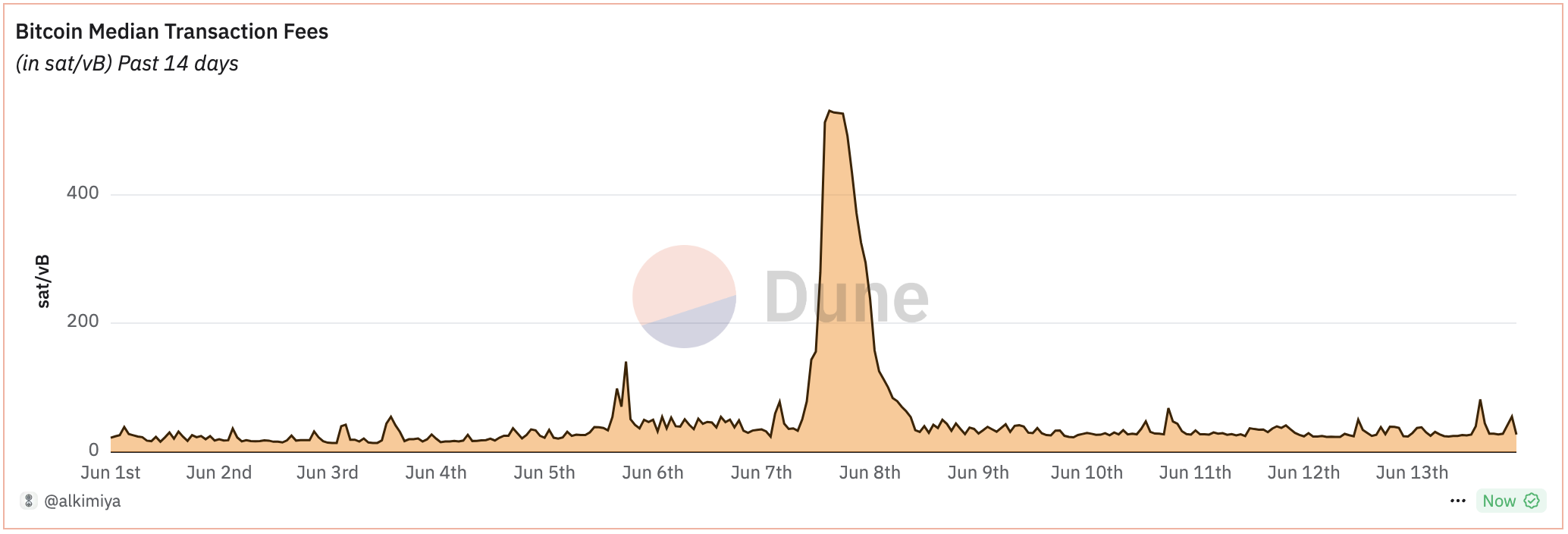
Bitcoin Median Transaction Fees during OKX’s UTXO Consolidation. Source: Alkimiya BTC Transaction Fee Market ⏳
Multiple events can be identified as on-chain activities that occurred multiple times by a single creator. For example, Babylon Labs’ Phase-1 Cap-1 & Cap-2 launches - let’s zoom in.
If you’re interested in reading the full Babylon Labs’ Phase-1 Cap-1 case study, you can read ithere.
| Cap-1 | Cap-2 | |
|---|---|---|
| When did it occur? | August 22nd 2024 | October 9th 2024 |
| Type of Caps | Amount-based; 1000 BTC | Duration-based; 10 BTC blocks |
| Limits per Transaction | Max. 0.05 BTC | Max. 500 BTC |
| Highest Median Feerate | 1,554 sats/vB | 25 sats/vB |
| Total Fees Spent | 53.4 BTC ($3.4m) | 1.56 BTC ($0.12m) |
Cap-1 was the first of its kind and many were uncertain about how high feerates would go, but one thing was clear - people were going to fight to be part of the 1000 BTC cap. As a result, BTC median feerate reached an insane high of 1,554 sats/vB — a 195x increase.
However, it was a different story for Cap-2. After the Babylon team analyzed what happened prior, they changed the conditions to favor the stakers. As a result, BTC median feerate only peaked to 25 sats/vB.
Cap-1 set the “standards” of Babylon Labs’ events, but due to the change in conditions, the impact of Cap-2 was greatly diminished. This underlines that despite historical data showing one version, there is always a risk that the future result would be different.
It is a skill to take note of trends but it is also imperative to consider other conditions and market sentiment.
Take a look at the comparison of Cap-1’s and Cap-2’s effects on feerate movement in a single image below.
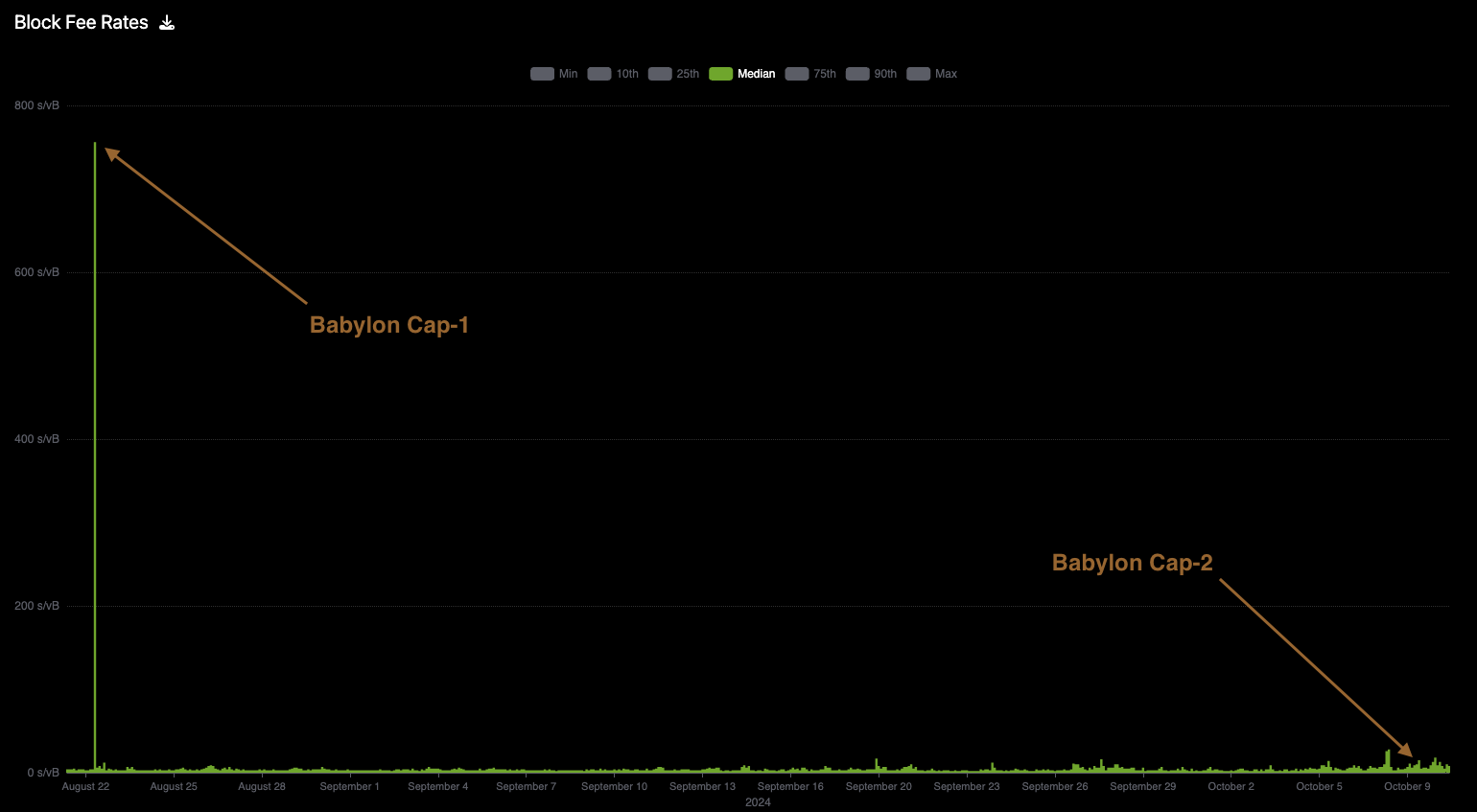
Mempool.space - Babylon Cap-1 vs Cap-2
Now that you can identify some trends, it’s time to put what you learnt to practice 👇🏻
Updated 11 months ago
